Second installment in my series of favorite manga. In the 1950’s we can see pioneers of several manga genres at work. As always, there’s loads of Tezuka. So here are the best manga of 1951-1960: six works I’ve enjoyed and recommend to you or at least deemed significant in the evolution of the medium, all in neat chronological order. You’re welcome!
Best manga of 1951-1960
Astro Boy – Osamu Tezuka, 1951-1968
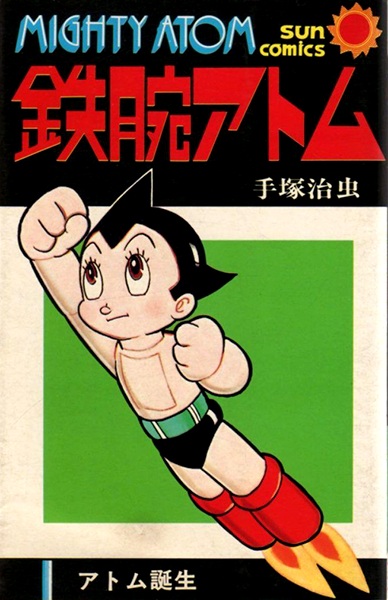
Astro Boy is arguably Tezuka’s most iconic or at least most famous character. The manga became an instant success, and caused Tezuka to quit his aspirations to become a doctor and focus entirely on drawing manga. It’s no surprise that he chose Astro Boy to be made into the first anime series of all time. He’s a great character with many kinds of appeal: a cute robot kid in a futuristic setting, with superhero-like powers and a tragic and gripping backstory. The genius scientist Dr. Tenma loses his son in an accident and is determined to replicate him as a robot. Once he realizes the boy does not grow up like a human (duh I thought he was a genius?), he sells him to a circus… So it’s basically sci-fi Frankenstein, Superman, Pinocchio and I don’t know, like, Hansel and Gretel,… all in one.
If you’re hoping to read Astro Boy to get an idea of Tezuka’s early style, you’ll be disappointed. The collected volumes of Astro Boy, much like Black Jack, have been published out of order. The very first chapter, “Ambassador Atom”, can be found in volume 15 chapter 44 of the Dark Horse edition. The rest of the chapters are of uneven quality, I wouldn’t recommend reading them all. I think one of the first two anime incarnations would probably be a better introduction to this story.
Another manga of his from this era that has been turned into a popular anime was Ribbon no Kishi, although I can’t find any translations of it.
Other Tezuka recommendations from this era: Kitarubeki Sekai and Tonkaradani Monogatari
Tsumi to Batsu / Crime and Punishment – Osamu Tezuka, 1953
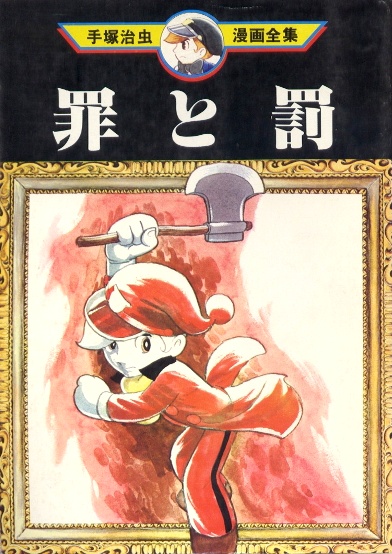
I was surprised that this manga adaptation of Dostoyevsky’s Crime and Punishment even existed, and very pleasantly surprised at how good it is. That this dark tale of existentialism could be turned into a children’s comic was something I never would have thought of. It’s also done with the most graceful drawings I’ve seen from Tezuka so far. Sadly, as you might expect, the nihilistic motives of the main character and the existentialist philosophy of the Dostoyevsky is almost completely lost. Although his inner struggles with his guilt are visible at the end. I was however amazed at the details I remember from the story that Tezuka somehow managed to turn into ideas for creative structuring of the page or even some slapstick comedy. The pages on the staircase (p14-24), where we see the same décor in every panel, but the action happens either on the staircase or behind the closed doors, are a small stroke of genius and remind me of the Hi no Tori: Space chapter he would make in the future. Tsumi to Batsu wasn’t a commercial success. I wouldn’t buy it for my kids if I’m honest. But if you’re a fan of this classic novel, it’ll be a treat to read this.
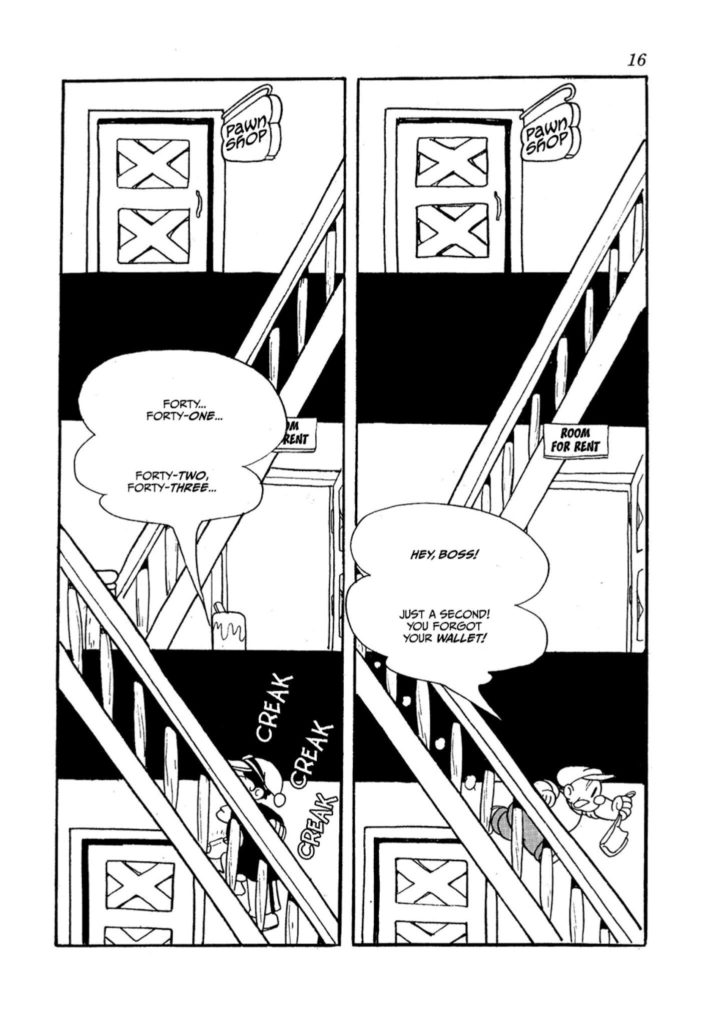
Honorable Mentions:
Tantei Book: Kage – various mangaka, 1956
The 50’s brought us of one of the first gekiga publications Tantei Book: Kage, considered to be extremely influential in the evolution of manga. Gekiga is a term comparable to “graphic novel” used by more serious artists who wished to aim their stories at adults. Unfortunately, I can’t find a way to read it.
Tetsujin 28-go – Mitsuteru Yokoyama, 1956-1966
Another wildly popular robot, Gigantor for Western audiences. Arguably the dawn of mecha. Although again, nowhere to be found…
Kuroi Fubuki – Yoshihiro Tatsumi, 1956
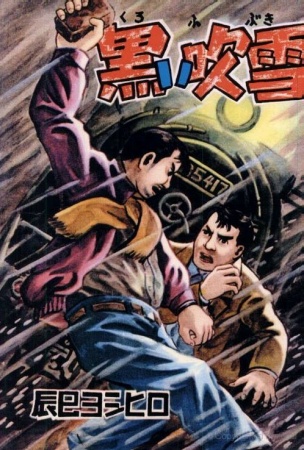
The earliest example of gekiga I could find. An suspenseful and action-heavy comic by Yoshihiro Tatsumi, about an unlikely friendship between a career criminal and a pianist arrested for murder he doesn’t remember. The story won’t blow your mind but it’s a pageturner from a skilled mangaka, with a cinematic art style. Too bad this is the earliest work of him I found. At 100+ pages, it’s definitely more like a graphic novel than a comic or manga and surely worth picking up.
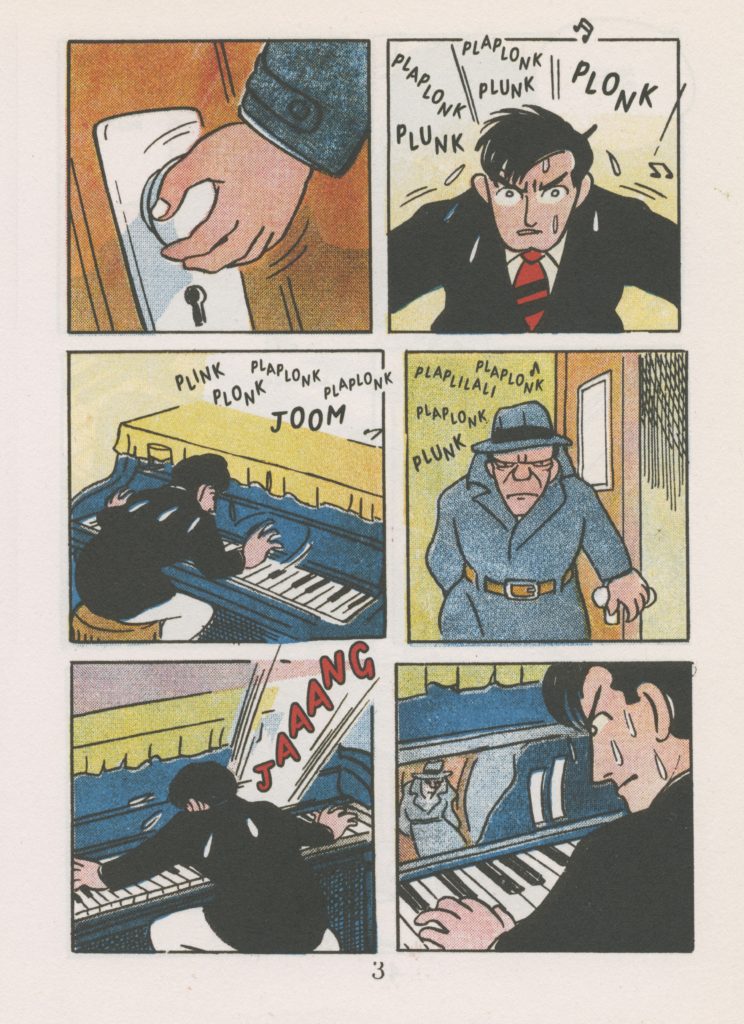
Sakura Namiki – Macoto Takahashi, 1957
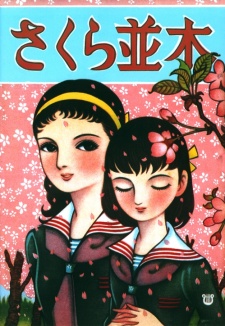
The first true shoujo in the list, and a shoujo ai at that. The first pages are like a flowery picture book with words. But when the comic actually starts Macoto Takahasi almost makes ping pong seem as bad ass and high stakes as Taiyou Matsumoto did later. Only 4 chapters long, but history in the making. Note the evolution of Tezuka’s Disney eyes to the sparkly shoujo eyes and the graceful creativity in the page structure. Or the abstract panels that portray the emotional turmoil of the character. Although still oddly geometrical and unlike anything you’ve seen in a manga probably, the panel shapes during the ping pong match look like they could be situated right in the middle of shounen and shoujo as we know them. Seemingly a missing link between the straight forward rectangles of shounen and the left-brain page treatment of shoujo, with its almost dreamlike spilling of characters, dialogues and thought bubbles onto paper. A must-read for manga history fans, if only for the beautiful art.
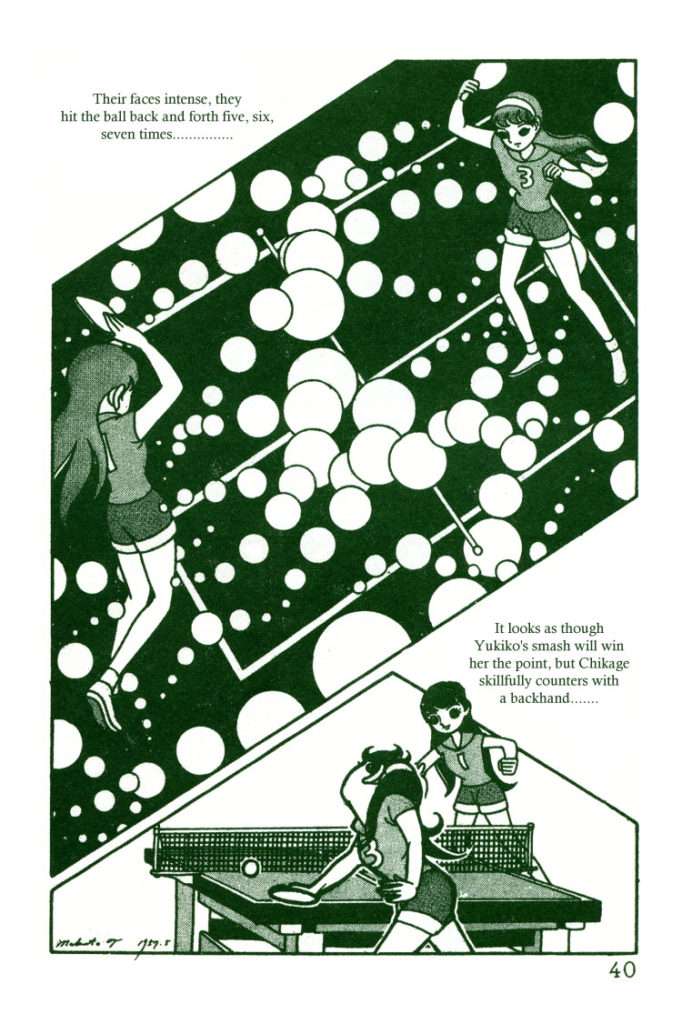
Honorable Mention:
Hakaba Kitaro – Shigeru Mizuki, 1959
Template for the popular Gegege no Kitaro.
Chidaruma Kenpou – Onorera ni Tsugu – Hiroshi Hirata, 1960
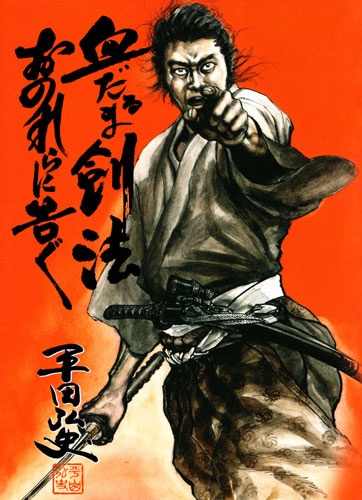
Here’s another first (probably not actually the first). A historical, martial arts seinen by Hiroshi Hirata, in a detailed and cinematic art style people might recognize from Lone Wolf and Cub. A bloody manga about Gennosuke, a social outcast, driven mad with rage from being shunned by his peers. Gorgeous art but questionable content. I’m not sure if its’ really racist about a certain social class or actually trying to show the dangers of social exclusion.

Angel no Oka – Osamu Tezuka, 1960
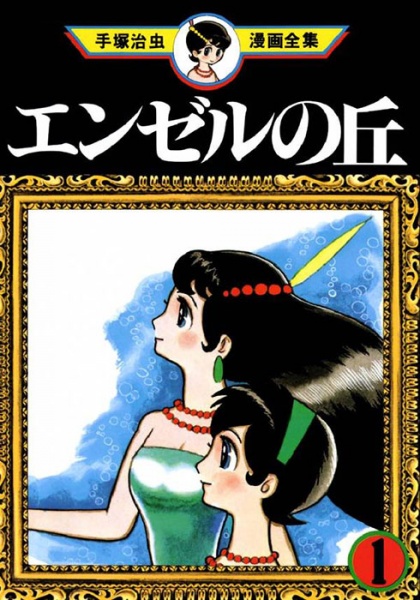
A beautifully drawn shoujo tale by Tezuka, about an exiled mermaid princess, a rich boy who rescues her and his perverse younger sister, who happens to look just like the mermaid princess.
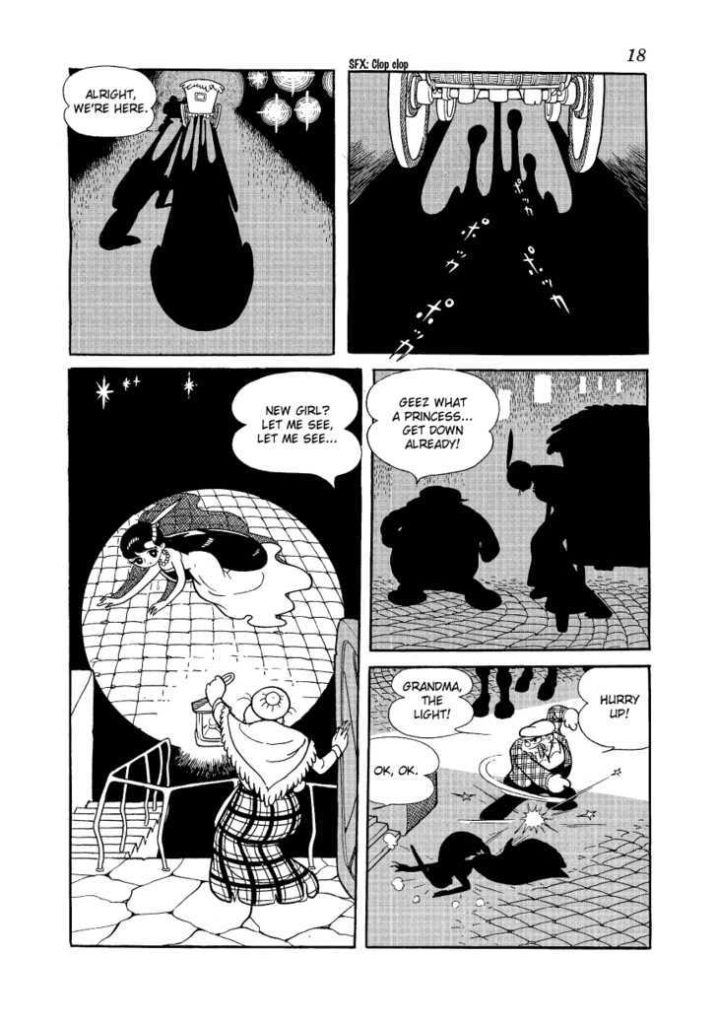
Thanks for reading my picks for the best manga of 1951-1960. Let me know if I missed your favorites!
Next up: Best manga of 1961-1965
Previous post:
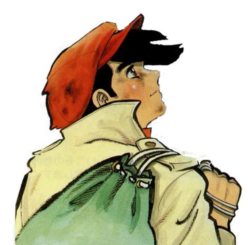
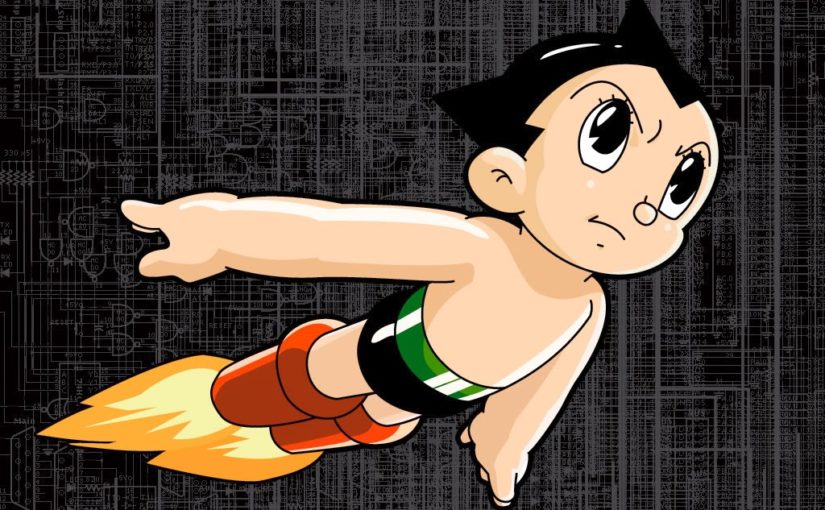
Hi which astroboy anime do you recommend?
Hi, I haven’t actually completed any of them. The first one is definitely interesting for historical value. The 1980 version seemed solid as far as I’ve watched it and is generally regarded as the best (most watchable) one.